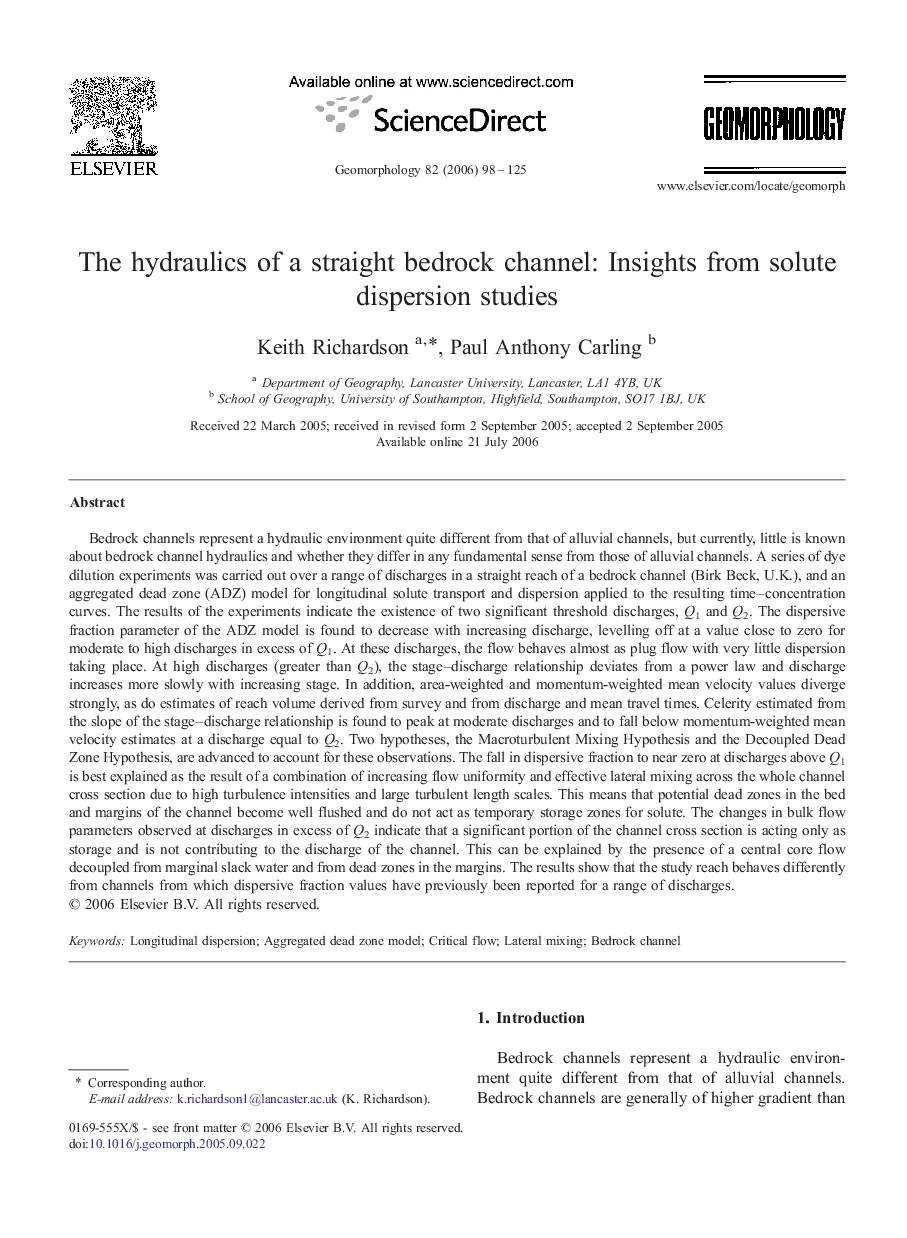| کد مقاله | کد نشریه | سال انتشار | مقاله انگلیسی | نسخه تمام متن |
|---|---|---|---|---|
| 4687333 | 1635588 | 2006 | 28 صفحه PDF | دانلود رایگان |

Bedrock channels represent a hydraulic environment quite different from that of alluvial channels, but currently, little is known about bedrock channel hydraulics and whether they differ in any fundamental sense from those of alluvial channels. A series of dye dilution experiments was carried out over a range of discharges in a straight reach of a bedrock channel (Birk Beck, U.K.), and an aggregated dead zone (ADZ) model for longitudinal solute transport and dispersion applied to the resulting time–concentration curves. The results of the experiments indicate the existence of two significant threshold discharges, Q1 and Q2. The dispersive fraction parameter of the ADZ model is found to decrease with increasing discharge, levelling off at a value close to zero for moderate to high discharges in excess of Q1. At these discharges, the flow behaves almost as plug flow with very little dispersion taking place. At high discharges (greater than Q2), the stage–discharge relationship deviates from a power law and discharge increases more slowly with increasing stage. In addition, area-weighted and momentum-weighted mean velocity values diverge strongly, as do estimates of reach volume derived from survey and from discharge and mean travel times. Celerity estimated from the slope of the stage–discharge relationship is found to peak at moderate discharges and to fall below momentum-weighted mean velocity estimates at a discharge equal to Q2. Two hypotheses, the Macroturbulent Mixing Hypothesis and the Decoupled Dead Zone Hypothesis, are advanced to account for these observations. The fall in dispersive fraction to near zero at discharges above Q1 is best explained as the result of a combination of increasing flow uniformity and effective lateral mixing across the whole channel cross section due to high turbulence intensities and large turbulent length scales. This means that potential dead zones in the bed and margins of the channel become well flushed and do not act as temporary storage zones for solute. The changes in bulk flow parameters observed at discharges in excess of Q2 indicate that a significant portion of the channel cross section is acting only as storage and is not contributing to the discharge of the channel. This can be explained by the presence of a central core flow decoupled from marginal slack water and from dead zones in the margins. The results show that the study reach behaves differently from channels from which dispersive fraction values have previously been reported for a range of discharges.
Journal: Geomorphology - Volume 82, Issues 1–2, 6 December 2006, Pages 98–125